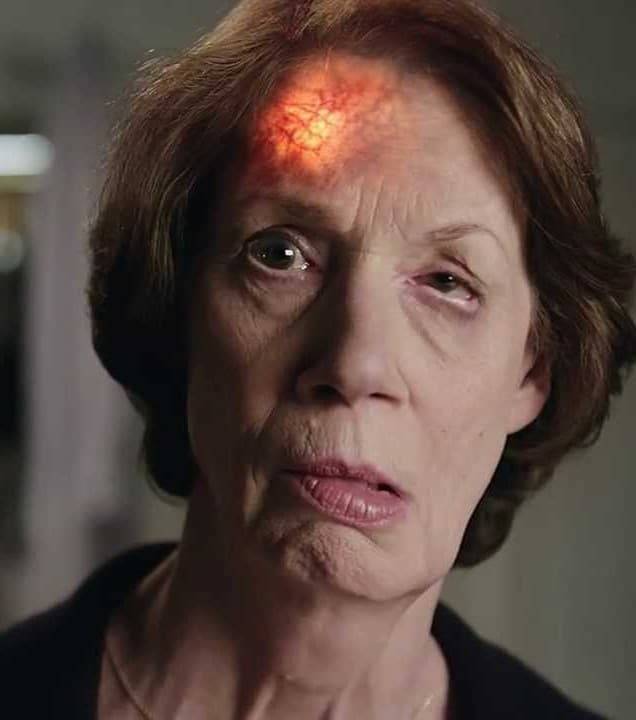Stroke: Causes, Symptoms, Treatment, and Prevention
**Introduction**
Stroke, often referred to as a "brain attack," is a medical emergency that occurs when the blood flow to a part of the brain is interrupted or reduced, depriving brain tissue of oxygen and nutrients. This disruption in blood flow can lead to the rapid death of brain cells and potentially devastating consequences. Stroke is a leading cause of long-term disability and the second leading cause of death worldwide. Understanding the causes, symptoms, treatment options, and prevention strategies for stroke is crucial for both individuals and healthcare professionals.
**Types of Stroke**
There are primarily three types of stroke: ischemic stroke, hemorrhagic stroke, and transient ischemic attack (TIA).
1. **Ischemic Stroke**: This type of stroke occurs when a blood clot blocks or narrows an artery leading to the brain, reducing blood flow. Ischemic strokes account for approximately 87% of all stroke cases. There are two main subtypes of ischemic stroke:
- **Thrombotic Stroke**: Caused by a blood clot (thrombus) forming within one of the arteries supplying blood to the brain.
- **Embolic Stroke**: Caused by a blood clot or other debris that forms elsewhere in the body, often the heart, and travels through the bloodstream to the brain.
2. **Hemorrhagic Stroke**: This type of stroke occurs when a blood vessel in the brain ruptures or leaks, causing bleeding into or around the brain tissue. Hemorrhagic strokes account for about 13% of all stroke cases. There are two main subtypes of hemorrhagic stroke:
- **Intracerebral Hemorrhage**: Bleeding occurs within the brain tissue itself due to the rupture of a blood vessel.
- **Subarachnoid Hemorrhage**: Bleeding occurs in the space between the brain and the thin tissues that cover it (subarachnoid space), often due to the rupture of an aneurysm.
3. **Transient Ischemic Attack (TIA)**: Also known as a mini-stroke, a TIA is a temporary disruption of blood flow to the brain, typically lasting for a few minutes to hours. While TIAs do not usually cause permanent brain damage, they are often considered warning signs of an impending stroke and should be taken seriously.
**Causes of Stroke**
Several factors contribute to the risk of stroke, including:
1. **High Blood Pressure (Hypertension)**: Elevated blood pressure is the single most important modifiable risk factor for stroke.
2. **Smoking**: Tobacco smoke contains chemicals that can damage blood vessels and increase the risk of stroke.
3. **Diabetes**: Poorly managed diabetes can lead to the buildup of fatty deposits in blood vessels, increasing the risk of stroke.
4. **High Cholesterol**: High levels of LDL ("bad") cholesterol can lead to the buildup of plaque in arteries, narrowing them and increasing the risk of stroke.
5. **Obesity**: Being overweight or obese can contribute to other risk factors for stroke, such as high blood pressure, diabetes, and high cholesterol.
6. **Physical Inactivity**: Lack of regular physical activity can lead to obesity and other health conditions that increase the risk of stroke.
7. **Excessive Alcohol Consumption**: Drinking too much alcohol can raise blood pressure and contribute to other risk factors for stroke.
8. **Atrial Fibrillation**: An irregular heartbeat can cause blood clots to form in the heart, which can then travel to the brain and cause a stroke.
9. **Family History of Stroke**: Individuals with a family history of stroke are at higher risk themselves.
10. **Age and Gender**: The risk of stroke increases with age, and men have a slightly higher risk of stroke than women, although women are more likely to die from stroke.
**Symptoms of Stroke**
Recognizing the signs and symptoms of stroke is crucial for seeking immediate medical attention, as early treatment can significantly improve outcomes. The acronym FAST is a helpful tool for remembering the common signs of stroke:
- **F**ace Drooping: One side of the face may droop or become numb. Ask the person to smile to check for facial asymmetry.
- **A**rm Weakness: One arm may become weak or numb. Ask the person to raise both arms to see if one arm drifts downward.
- **S**peech Difficulty: Speech may be slurred or difficult to understand. Ask the person to repeat a simple sentence to check for speech problems.
- **T**ime to Call Emergency Services: If you observe any of these signs, it's time to call emergency services immediately.
In addition to these classic symptoms, other signs of stroke may include sudden:
- Severe headache with no known cause
- Trouble seeing in one or both eyes
- Difficulty walking, dizziness, or loss of balance and coordination
It's important to note that not all stroke symptoms are sudden. Some may come on gradually over minutes to hours or even days.
**Diagnosis and Treatment**
Prompt diagnosis and treatment are essential for minimizing brain damage and improving outcomes after a stroke. When someone suspected of having a stroke arrives at the hospital, healthcare providers will perform a series of tests and evaluations, including:
1. **Physical Examination**: Assessing the person's neurological function, including strength, coordination, and reflexes.
2. **Imaging Tests**: CT scans or MRI scans can help identify the type, location, and extent of damage to the brain.
3. **Blood Tests**: These tests can help determine if there are any underlying conditions, such as high cholesterol or diabetes, that may have contributed to the stroke.
Once a stroke is diagnosed, treatment may include:
1. **Clot-Busting Medications**: If the stroke is ischemic and the patient arrives at the hospital within a certain time frame, they may be given medication to dissolve the clot and restore blood flow to the brain.
2. **Mechanical Thrombectomy**: In some cases, a procedure called mechanical thrombectomy may be performed to remove the clot directly from the blocked artery.
3. **Medications to Prevent Future Strokes**: Depending on the underlying cause of the stroke, medications such as antiplatelet drugs (e.g., aspirin) or anticoagulants (e.g., warfarin) may be prescribed to reduce the risk of future strokes.
4. **Surgery**: In cases of hemorrhagic stroke, surgery may be necessary to repair damaged blood vessels or reduce pressure on the brain caused by bleeding.
**Rehabilitation and Recovery**
Stroke rehabilitation plays a crucial role in helping survivors regain independence and improve their quality of life. Depending on the extent of brain damage and the individual's specific needs, rehabilitation may include:
1. **Physical Therapy**: Exercises and activities to improve strength, balance, coordination, and mobility.
2. **Occupational Therapy**: Techniques to help individuals relearn everyday tasks, such as dressing, eating, and bathing.
3. **Speech Therapy**: Exercises to improve speech and language skills for those who have difficulty communicating.
4. **Cognitive Rehabilitation**: Strategies to address memory, attention, and problem-solving skills that may be affected by stroke.
5. **Emotional Support**: Counseling or support groups to help individuals cope with the emotional and psychological effects of stroke.
Stroke recovery is often a long and challenging process, requiring patience, persistence, and support from healthcare professionals, caregivers, and loved ones.
**Prevention Strategies**
While some risk factors for
stroke, such as age and family history, cannot be changed, there are several steps individuals can take to reduce their risk:
1. **Manage High Blood Pressure**: Regular monitoring and management of blood pressure through lifestyle changes and medications if necessary.
2. **Quit Smoking**: Smoking cessation can significantly reduce the risk of stroke and other cardiovascular diseases.
3. **Control Diabetes**: Maintain healthy blood sugar levels through diet, exercise, and medication as prescribed by a healthcare provider.
4. **Eat a Healthy Diet**: A diet rich in fruits, vegetables, whole grains, and lean proteins can help reduce the risk of stroke and other chronic diseases.
5. **Maintain a Healthy Weight**: Achieve and maintain a healthy weight through a balanced diet and regular physical activity.
6. **Limit Alcohol Consumption**: Drink alcohol in moderation, if at all, to reduce the risk of stroke and other health problems.
7. **Exercise Regularly**: Aim for at least 150 minutes of moderate-intensity aerobic activity or 75 minutes of vigorous-intensity activity each week, as recommended by health authorities.
8. **Treat Atrial Fibrillation**: If diagnosed with atrial fibrillation, work with a healthcare provider to manage the condition and reduce the risk of blood clots and stroke.
9. **Manage Cholesterol Levels**: Keep cholesterol levels in check through diet, exercise, and medications if prescribed.
By adopting a healthy lifestyle and managing underlying health conditions, individuals can significantly reduce their risk of stroke and improve their overall health and well-being.
**Conclusion**
Stroke is a serious and potentially life-threatening medical emergency that requires immediate attention and treatment. By understanding the causes, symptoms, treatment options, and prevention strategies for stroke, individuals can take proactive steps to reduce their risk and improve their chances of recovery if a stroke does occur. It's essential to recognize the signs of stroke and seek emergency medical care without delay, as every minute counts in minimizing brain damage and maximizing outcomes. With early intervention, rehabilitation, and ongoing support, many stroke survivors can regain independence and lead fulfilling lives.


